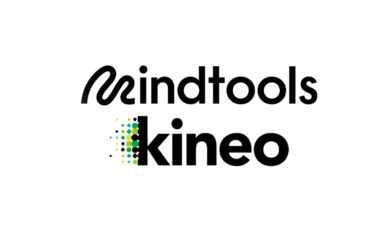A 2022 report by Gallup shows that, prior to the pandemic, employee engagement and wellbeing levels were on the rise for the best part of a decade. Now, however, they’re stagnant pretty much across the globe. Just 21 percent of employees report feeling engaged at work. While only 33 percent of employees say they are thriving in terms of their overall wellbeing. [1]
The global financial cost in terms of lost productivity is enormous, with Gallup putting this at $7.8 trillion – or 11percent of global GDP. [2]
How can employee engagement improve business performance?
For us to improve employee engagement, we need to understand what it really is and why it’s important to organizational success.
According to engagement expert, David MacLeod, employee engagement is concerned with “how we create the conditions in which employees offer more of their capability and potential.”[3] It’s about helping employees to feel:
- committed to their organization’s goals and values
- motivated to contribute to organizational succes
- supported in terms of their own wellbeing
Organizations that fail to engage their employees can expect this to impact their bottom line, through greater staff turnover, higher absenteeism and lower customer satisfaction.
Global consulting firm, DDI, offers up some key signs of low engagement to look out for in your employees,[4] including:
- reduced job performance
- resistance to change
- withdrawal of discretionary effort
- focusing on problems, rather than problem-solving
What are the key enablers of employee engagement?
Improving employee engagement can be tricky – particularly if the organization has a very rigid culture, or if human resources budgets are tight. The truth is that improving employee engagement often requires a cultural change, and a long-term effort from everyone involved, from the CEO down.
In the UK, highly regarded research by David Macleod and Nita Clark of Engage for Success identified that organizations which showed high employee engagement and performance shared four “enablers,” for success. Let’s take a look at each of these enablers in turn.
1. Strategic narrative
When a company fails to communicate its purpose to its people, they inevitably “fill the gap” with their own story. This often leads to rumors spreading, and causes people to lose focus and purpose. According to MacLeod, strategic narrative is “a story that people understand about where the organization’s been, where it is today, and where it aspires to go in the future.” He adds that this strategic narrative is a common language that inspires everyone in the organization. It gives meaning and purpose to each job and activity.
The narrative must have a beginning, a middle and a future. It also needs to be a compelling and authentic story. One that people can believe in, and which “ignites passion” in their hearts. Crucially, strategic narrative only works if leaders are “visible.” For instance, by launching a personal blog, having an “open door hour” one day a week, going back to the shop floor, and having regular one-on-ones and weekly briefings with staff.
2. Engaging managers
The relationship between managers and their people can make or break the performance of an organization. So, managers must build strong bonds with their team members by helping them to focus on their personal and professional goals, treating them as individuals, and coaching and challenging them. As MacLeod explains, “The people who’re managing organizations with an engaged workforce do three things well.”
The first, he says, is that “they’re clear what ‘success’ in their role will look like, and they’re given scope to bring themselves to that role, to harness their creativity and energy to bring about what ‘success’ in the job will look like. “Moreover,” he continues, “engaged workers feel that their manager treats them, not as a mere ‘human resource,’ but as a human being. That relationship encourages workers to bring more of themselves to work.
“The third thing that successful managers are doing is coaching their people – usually at least once a week,” MacLeod says. “This doesn’t always have to be via a formal coaching session, but it will acknowledge good behavior and address dysfunctional behaviors in a positive way.”
3. Employee voice
Giving people a voice empowers them. They feel listened to and are encouraged to use their knowledge to improve the business, and to innovate. As Nita Clarke explains, “If you see your workers as part of the solution, and not as part of the problem, you make them partners in the organization’s success.” She adds: “The third thing that organizations that engage their staff do well is that they listen – – and allow their people to talk across silos.
In any organization, the indications are that, whenever something’s going to go wrong, somebody knows. “So, if you’ve got a good ‘listening organization’ where your workers trust you, they’ll tell you when something’s about to go wrong. That’s a cheaper way of protecting your organization’s reputation than lawyers or PR companies getting to work after an event.”
Often, giving employees a voice is one of the cheapest and easiest ways to improve engagement. It could be as simple as setting up an employee engagement survey or a suggestions box. Or installing an “Idea Street,” where staff can post their ideas online, comments can be added, and people can vote on them. You can also try hosting more formal events designed to encourage employee engagement. For example, a World Cafe, or a solutions group using Ohmae’s 3C Model.
4. Integrity
The fourth and final enabler is about having a “say-do” attitude. This means keeping the promises that you make, and providing a clear explanation if you are unable to do so. As MacLeod says, “The fourth thing that we found was a sense of integrity. What they said their values were, were reflected in day-to-day behaviors – – how people acted and what the culture of the organization was. If you have a gap between who you say you are and what you actually are, that creates huge mistrust. And you don’t get engaged employees in an organization where there’s distrust.”
If an organization has integrity, it can also build trust. But, for it to be truly effective, integrity needs to be upheld by everyone from board members to frontline staff. Managers need to be held to account and good behavior must be acknowledged through recognition and reward schemes. Building trust, however, can take time. According to MacLeod and Clarke, organizations that have good engagement achieve it by:
- Setting, enforcing and reinforcing the behavioral expectations of staff. That means rewarding desired behavior and punishing those that show bad behavior, such as discrimination or bullying.
- Encouraging all staff to tell the truth. For instance, by sharing information, or sharing credit with those who deserve it. And by making sure that messages and actions taken are consistent across the organization.
- Reporting back. Providing regular feedback on goals, priorities, and promised actions.
- Going back to the shop floor. Senior leaders spending time with junior employees to gain a first-hand view of the challenges they face.
[1] Gallup, State of the Global Workplace: 2022 Report. Available here.
[2] Ryan Pendell, ‘The World’s $7.8 Trillion Workplace Problem’ (June 14, 2022). Available here.
[3] Engage for Success, ‘What is Employee Engagement’. Available here.
[4] Mark Smedley, ‘Signs of Low Employee Engagement’ (February 17, 2021). Available here.




